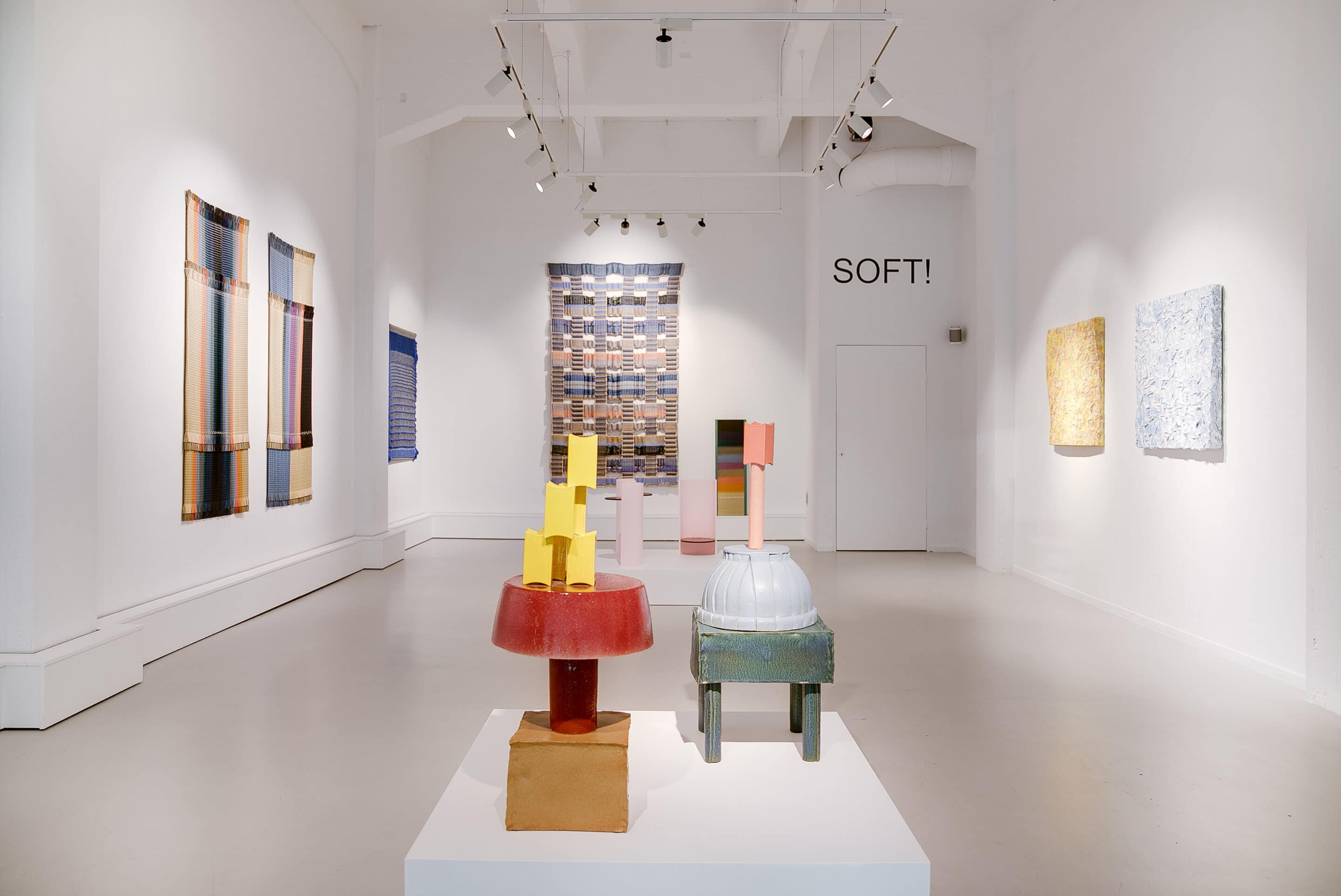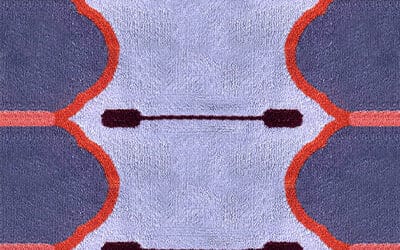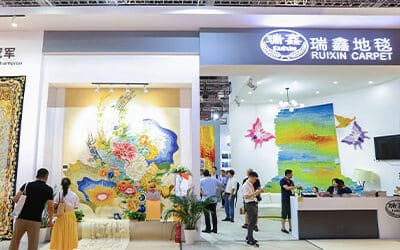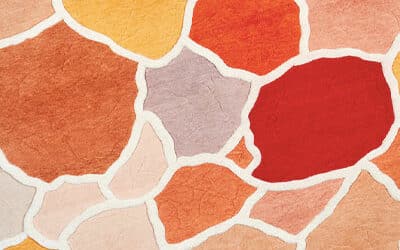‘Softly-softly’ describes a situation where a patient, imaginative approach is preferred over force. It also describes the methodology of five female artist designers in a new exhibition at Rademakers Gallery, Amsterdam, who rather than follow the accepted definition of ‘soft’, perceptively redefine it.
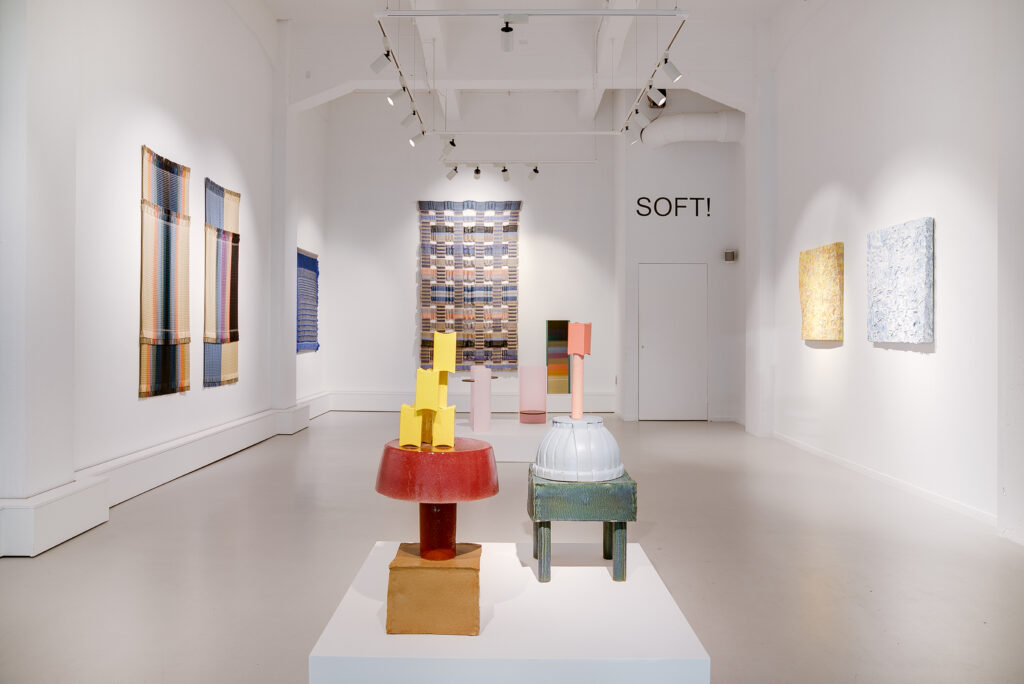
Founded in 2007 by Pien Rademakers, the twin pillars of the gallery’s mission statement are female artists and sustainability. The exhibition features weaves by Mae Engelgeer, Beppe Kessler, Joanna Schneider and Lola van Praag, and ceramics by Kiki van Eijk whose repertoire includes rugs and textiles. Sustainability of materials and resources is addressed by each in their own way.
Beppe Kessler uses recycled materials and self-invented techniques to create tactile, sensory works that possess an expressive, mysterious nature. Ingesnoerd (‘Constricted’) captures the oppositional forces inherent in the exhibition’s redefinition of ‘soft’. Tricot stretched over wood blocks is manipulated by Kessler into her desired shape. The works appear hard yet the fabric creates a soft shell. The effect calls to mind Rene Magritte’s The Lovers (1928) where two (hard) heads are shrouded in cloth. Similar to the questions his painting raise in the viewer, Kessler says ‘What the viewer exactly sees [in Ingesnoerd] remains a fascinating mystery.’
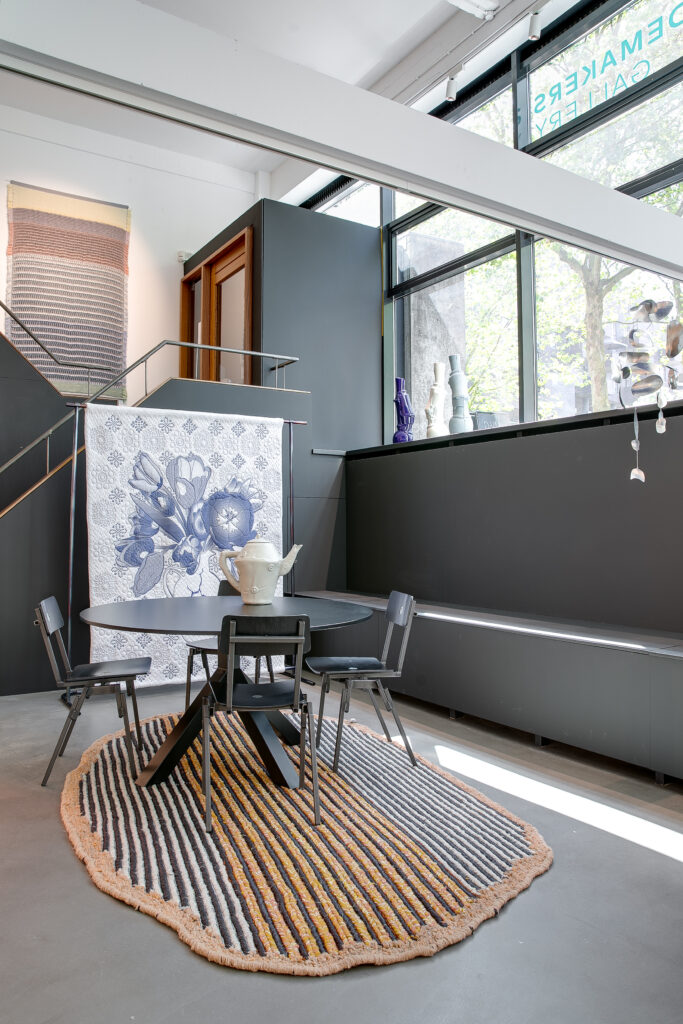
Mechanical married to manual is an essential feature of works made by Dutch artist and designer Mae Engelgeer. She presents a rug (Lilas Noche woven with black dyed fique fibre and natural new wool accented with copper, silver and gold metal threads), Jacquard weaves and tatami-based works in SOFT!. Ishoku tatami are machine woven in Japan from Igusa rice straw. Tatami making occurs when a rush woven ‘cover’ encloses the woven rice straw and this ‘envelope’ is given an edging. The tatami making is done by Kyoto-based tatami maker Mitsuru Yokoyama. ‘Then he ships it to the Netherlands,’ says Engelgeer, ‘I don’t do anything further with it.’
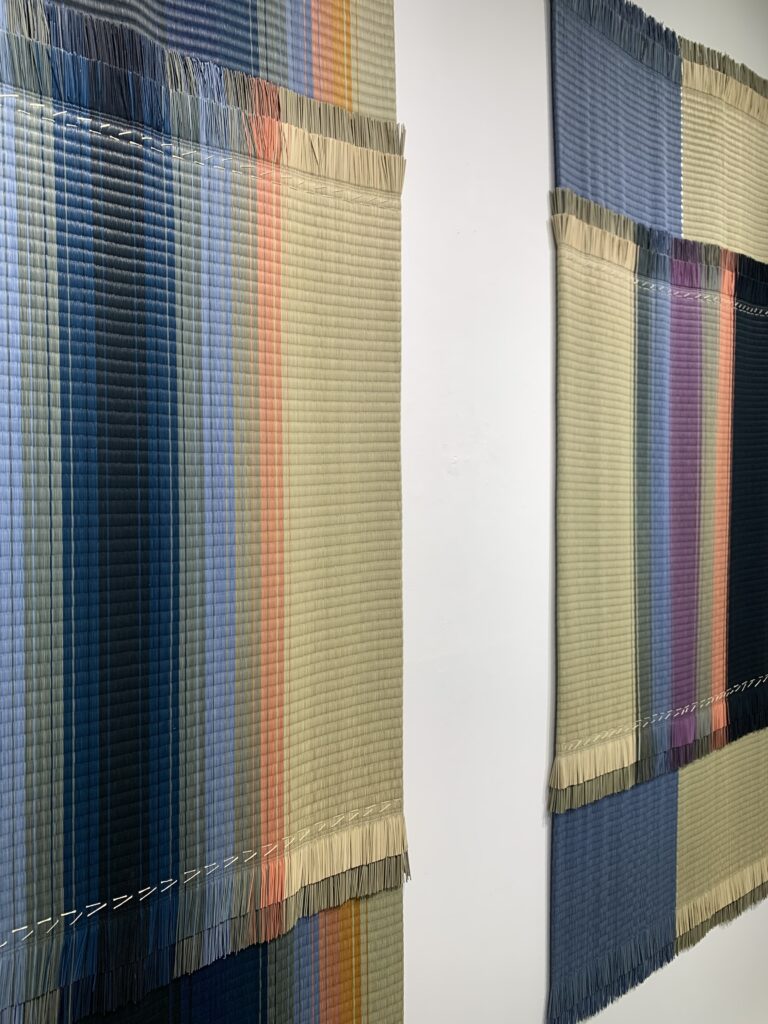
This traditional tatami is shown alongside Engelgeer’s adaptation of tatami created in collaboration with Yokoyama. Ishoku | perspective are colourful tatami weaves. Engelgeer creates a graphic colour pattern that is woven as tatami in Japan. Yokoyama cuts it and sends the sections to her in Amsterdam. ‘I do the hand assembling and add the bold hand stitches,’ she explains. Inspired by traditional early Japanese ceremonial tatami, Engelgeer says her tatami are meant to be rolled and intentionally lack the ‘base’ material. ‘I use the standard size and shape of Japanese tatami, but the colouring creates new perspectives and new ways to work with this traditional material.’
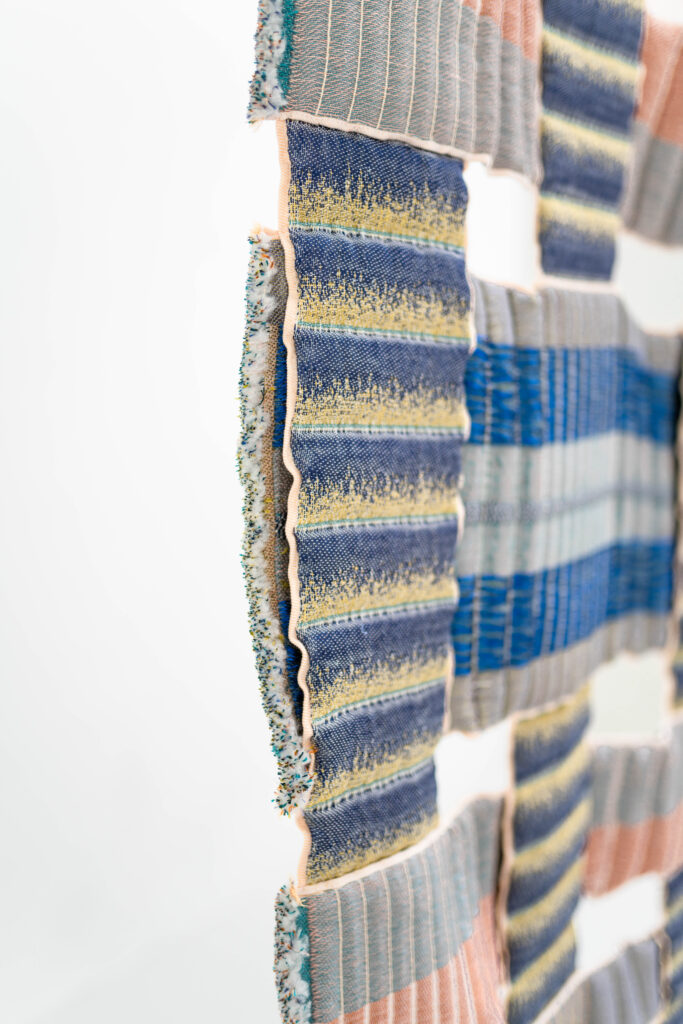
<em>Bold Weave<em> Mae Engelgeer Photo Naomi Jamie Studio 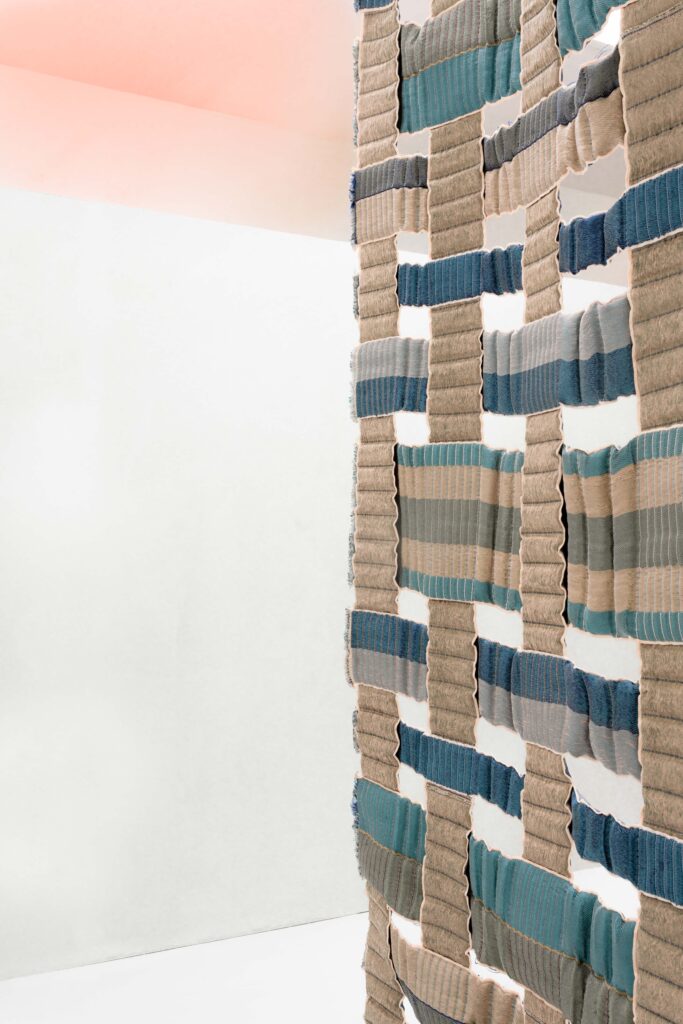
<em>Bold Weave<em> Mae Engelgeer Photo Naomi Jamie Studio
Produced at TextielLab, Engelgeer’s Bold Weave is inspired by Jacquard weave test pieces she made for her Lavish collection. Bold Weave panels have a highly tactile dimensional ‘ribs’ and a top layer of paper yarn. Ribbon-like Jacquard weave samples —Engelgeer calls them ‘strokes’—inspired the concept for Bold Weave. ‘While testing structures and new weaves on a Dornier mechanical Jacquard weave machine small strokes are created. I moved and played around with the strokes, which is how the idea of creating a big hand-woven “stroke” piece came about.’ Engelgeer and TextielLab programmed each unique machine-woven Jacquard stroke and Engelgeer interlaced the strokes by hand into a bold, open weave. ‘My work is always finished by doing and seeing what happens with the weave or with the yarns or colours. I adjust during the process and am always looking for the right balance and a cohesive, poetic feel.’
Contact with nature and raw, natural sustainable materials and recycled materials are critical to the work of Joana Schneider who creates sculptural environments. Her work in SOFT! includes Lavender Garden and Green Garden; two coiled topographical textile works that evoke the sensation of aerial views of maze gardens. ‘Die Rietdekkerin’ is her tribute to female roof thatchers. Schneider combined traditional Dutch craft techniques with discarded fishing ropes and yarns made from recycled PET bottles. She wrapped shiny yarns around the fishing ropes and bunches of reeds. Wrapping multiple colours around a single rope created a striking colour gradient, while the work also has a contemporary glitchy digital look created by pixellated colours.
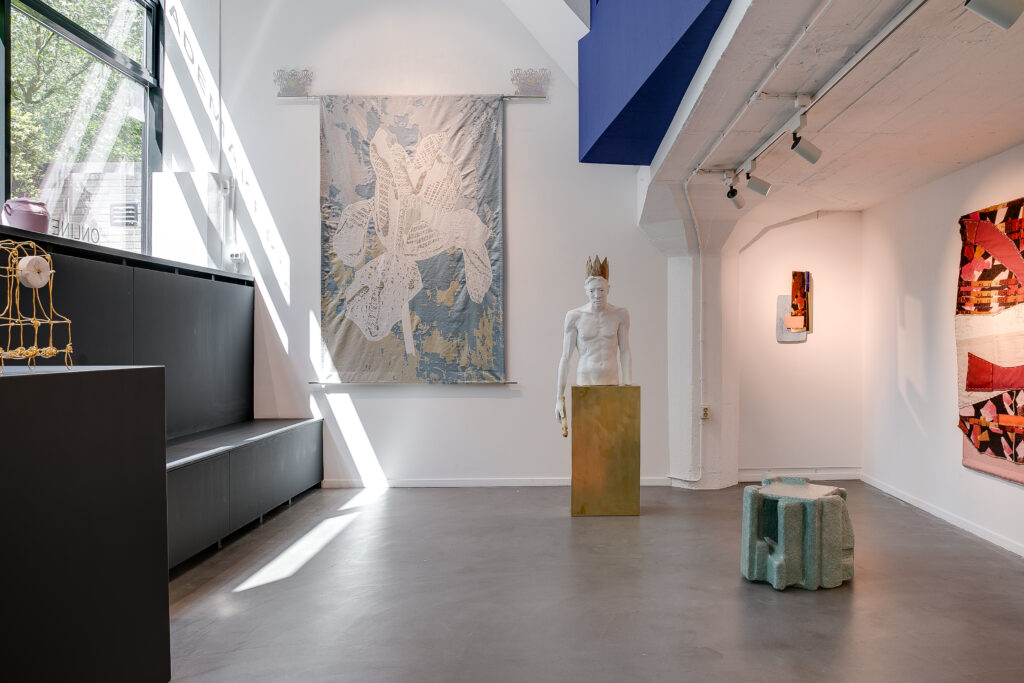
Lola van Praag uses appliqué, embroidery, digital printing, screen printing and industrial knitting to create complex textile works that reflect her love of nature and allow her to merge mechanical with manual. She collaborated with TextielLab on the objects on view in SOFT!. TextielLab’s industrial knitting machine allowed her to design her work in layers using complex yarns. Manual colour shifts allowed her to override the machine’s maximum colour allowance. Van Praag incorporates the history of the tulip in a floral work made on a knitting machine that depicts a female bulb peeler. A cracked vase with tulips symbolises the uncertain times in which we live.
—
The exhibition continues until Saturday 24 July 2021

